1.2. The History of Sociology

Since ancient times, people have been fascinated by the relationship between individuals and the societies to which they belong. The ancient Greeks might be said to have provided the foundations of sociology through the distinction they drew between physis (nature) and nomos (law or custom). Whereas nature or physis for the Greeks was “what emerges from itself” without human intervention, nomos in the form of laws, customs, or ways of life were human conventions designed to shape human behaviour. The modern sociological term “norm” (i.e., a social rule that regulates human behaviour) comes from the Greek term nomos. Histories by Herodotus (484–425 BCE) was a proto-anthropological work that described the great variations in the nomos of different ancient societies around the Mediterranean, indicating that human social life was not a product of nature but a product of human creation. If human social life was the product of an invariable human or biological nature, all cultures would be the same. The concerns of the later Greek philosophers — Socrates (469–399 BCE), Plato (428–347 BCE), and Aristotle (384–322 BCE) — with the ideal form of human community (the polis or city-state) can be derived from the ethical dilemmas of this difference between human nature and human norms. As Aristotle (1984) puts it, humans create the polis or community “not only in view of living but rather for living well.” Moreover, in a very modern sociological formulation, he argued “the polis is by nature prior to the family [oikia] and to each individual, because the whole is necessarily prior to the parts.”
In the 13th century, Ma Duan-Lin, a Chinese historian, first recognized social dynamics as an underlying component of historical development in his seminal encyclopedia, General Study of Literary Remains. The study charted the historical development of Chinese state administration from antiquity in a manner very similar to contemporary institutional analyses.
The next century saw the emergence of the historian some consider the world’s first sociologist, the Berber scholar Ibn Khaldun (1332–1406) of Tunisia. His Muqaddimah: An Introduction to History is known for going beyond descriptive history to an analysis of historical processes of change based on his insights into “the nature of things which are born of civilization” (Khaldun quoted in Becker and Barnes, 1961). Key to his analysis was the distinction between the sedentary life of cities and the nomadic life of pastoral peoples like the Bedouin and Berbers. The nomads, who exist independent of external authority, developed a social bond based on blood lineage and “esprit de corps” (‘Asabijja), which enabled them to mobilize quickly and act in a unified and concerted manner in response to the rugged circumstances of desert life. The sedentary population of the city entered into a different cycle in which esprit de corps is subsumed to institutional power and the intrigues of political factions. The need to be focused on subsistence is replaced by a trend toward increasing luxury, ease, and refinements of taste. The relationship between the two poles of existence, nomadism and sedentary life, was at the basis of the development and decay of civilizations (Becker and Barnes, 1961).
Finally, the French political philosopher, Montesquieu (1689-1755) outlined an early sociological framework in his comparative and historical classification of political structures. In his attempt to define the “laws of laws,” the social determinants that caused different legal structures and national identities to develop in different jurisdictions, he pioneered a uniquely sociological approach to variations in human society.
However, it was not until the 19th century that the basis of the modern discipline of sociology could be said to have been truly established. The impetus for the ideas that culminated in sociology can be found in the three major transformations that defined modern society and the culture of modernity: the development of modern science from the 16th century onward, the emergence of democratic forms of government with the American and French Revolutions (1775–1783 and 1789–1799 respectively), and the Industrial Revolution beginning in the 18th century. Not only was the framework for sociological knowledge established in these events, but also the initial motivation for creating a science of society. Early sociologists like Comte and Marx sought to formulate a rational, evidence-based response to the experience of massive social dislocation brought about by the transition from the European feudal era to capitalism. This was a period of unprecedented social problems, from the breakdown of local feudal communities to the hyper-exploitation of industrial labourers. Whether the intention was to restore order to the chaotic disintegration of society, as in Comte’s case, or to provide the basis for a revolutionary transformation in Marx’s, a rational and scientifically comprehensive knowledge of society and its processes was required. It was in this context that “society” itself, in the modern sense of the word, became visible as a phenomenon to early investigators of the social condition.
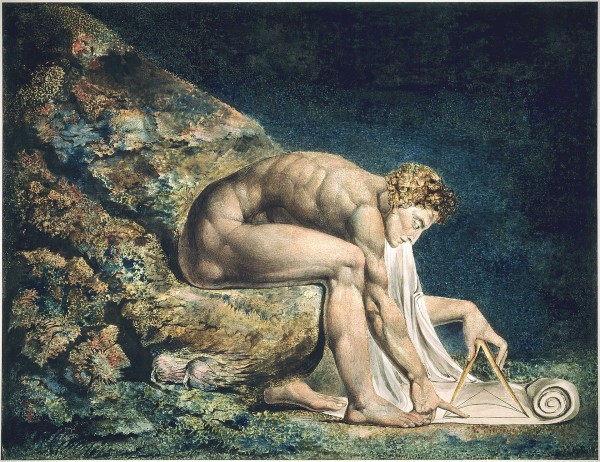
The development of modern science provided the model of knowledge needed for sociology to move beyond earlier moral, philosophical, and religious types of reflection on the human condition. Key to the development of science was the technological mindset that Max Weber termed the disenchantment of the world: “principally there are no mysterious incalculable forces that come into play, but rather one can, in principle, master all things by calculation” (1919). The focus of knowledge shifted from intuiting the intentions of spirits and gods to systematically observing and testing the world of things through science and technology. Modern science abandoned the medieval view of the world in which God, “the unmoved mover,” defined the natural and social world as a changeless, cyclical creation, hierarchically ordered and given purpose by divine will. Instead, modern science combined two philosophical traditions that had historically been at odds: Plato’s rationalism and Aristotle’s empiricism (Berman, 1981). Rationalism sought the laws that governed the truth of reason and ideas, and in the hands of early scientists like Galileo and Newton, found its highest form of expression in the logical formulations of mathematics. Empiricism sought to discover the laws of the operation of the world through the careful, methodical, and detailed observation of the world. The new scientific worldview therefore combined the clear and logically coherent, conceptual formulation of propositions from rationalism, with an empirical method of inquiry based on observation through the senses. Sociology adopted these core principles to emphasize that claims about social life had to be clearly formulated and based on evidence-based procedures. It also gave sociology a technological framework as a type of knowledge which could be used to solve social problems.
The emergence of democratic forms of government in the 18th century demonstrated that humans had the capacity to change the world. The rigid hierarchy of medieval society was not a God-given eternal order, but a human order that could be challenged and improved upon through human intervention. Through the revolutionary process of democratization, society came to be seen as both historical and the product of human endeavours. Age of Enlightenment philosophers like Locke, Voltaire, Montaigne, and Rousseau developed general principles that could be used to explain social life. Their emphasis shifted from the histories and exploits of the aristocracy to the life of ordinary people. Mary Wollstonecraft’s A Vindication of the Rights of Women (1792) extended the critical analysis of her male Enlightenment contemporaries to the situation of women. Significantly for modern sociology, they proposed that the use of reason could be applied to address social ills and to emancipate humanity from servitude. Wollstonecraft for example argued that simply allowing women to have a proper education would enable them to contribute to the improvement of society, especially through their influence on children. On the other hand, the bloody experience of the democratic revolutions, particularly the French Revolution, which resulted in the “Reign of Terror” and ultimately Napoleon’s attempt to subjugate Europe, also provided a cautionary tale for the early sociologists about the need for sober scientific assessment of empirical evidence to guide public policy and restrain excesses of power.
The Industrial Revolution in a strict sense refers to the development of industrial methods of production, the introduction of industrial machinery, and the organization of labour to serve new manufacturing systems. These economic changes are emblematic of the massive transformation of human life brought about by the creation of wage labour, capitalist competition, increased mobility, urbanization, individualism, and all the social problems they wrought: poverty, exploitation, dangerous working conditions, crime, pollution, disease, and the loss of family and other traditional support networks, etc. It was a time of great social and political upheaval with the rise of empires that exposed many people — for the first time — to societies and cultures other than their own. Millions of people were moving into cities and many people were turning away from their traditional religious beliefs. Wars, strikes, revolts, and revolutionary actions were reactions to underlying social tensions that had never existed before and called for critical examination. August Comte in particular envisioned the new science of sociology as the antidote to conditions that he described as “moral anarchy,” whereas Marx saw its potential to determine paths to social liberation.
Sociology therefore emerged; firstly, as an extension of the new worldview of science; secondly, as a part of the Enlightenment project and its focus on historical change, social injustice, and the possibilities of social reform; and thirdly, as a crucial response to the new and unprecedented types of social problems that appeared in the 19th century with the Industrial Revolution. It did not emerge as a unified science, however, as its founders brought distinctly different perspectives to its early formulations.
August Comte: The Father of Sociology
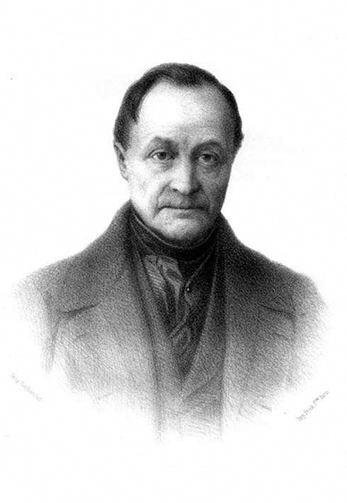
The term sociology was first coined in 1780 by the French essayist Emmanuel-Joseph Sieyès (1748–1836) in an unpublished manuscript (Fauré et al., 1999). In 1838, the term was reinvented by Auguste Comte (1798–1857). The contradictions of Comte’s life and the times he lived through can be in large part read into the concerns that led to his development of sociology. He was born in 1798, year 6 of the new French Republic, to staunch monarchist and Catholic parents. They lived comfortably off his father’s earnings as a minor bureaucrat in the tax office. Comte originally studied to be an engineer, but after rejecting his parents’ conservative, monarchist views, he declared himself a republican and free spirit at the age of 13 and was eventually kicked out of school at 18 for leading a school riot. This ended his chances of getting a formal education and a position as an academic or government official.
He became a secretary to the utopian socialist philosopher Henri de Saint-Simon (1760–1825) until they had a falling out in 1824 (after St. Simon reputedly purloined some of Comte’s essays and signed his own name to them). Nevertheless, they both thought that society could be studied using the same scientific methods utilized in the natural sciences. Comte also believed in the potential of social scientists to work toward the betterment of society and coined the slogan “order and progress” to reconcile the opposing progressive and conservative factions that had divided the crisis-ridden, post-revolutionary French society. Comte proposed a renewed, organic spiritual order in which the authority of science would be the means to create a rational social order. Through science, each social strata would be reconciled with their place in a hierarchical social order. It is a testament to his influence in the 19th century that the phrase “order and progress” adorns the Brazilian coat of arms (Collins and Makowsky, 1989).
Comte named the scientific study of social patterns positivism. He described his philosophy in a well-attended and popular series of lectures, which he published as The Course in Positive Philosophy (1830–1842) and A General View of Positivism (1848/1977). He believed that using scientific methods to reveal the laws by which societies and individuals interact would usher in a new “positivist” age of history. In principle, positivism, or what Comte called “social physics,” proposed that the study of society could be conducted in the same way that the natural sciences approach the natural world.
While Comte never in fact conducted any social research, his notion of sociology as a positivist science that might effectively socially engineer a better society was deeply influential. Where his influence waned was a result of the way in which he became increasingly obsessive and hostile to all criticism as his ideas progressed beyond positivism as the “science of society” to positivism as the basis of a new cult-like, technocratic “religion of humanity.” The new social order he imagined was deeply conservative and hierarchical, a kind of a caste system with every level of society obliged to reconcile itself with its “scientifically” allotted place. Comte imagined himself at the pinnacle of society, taking the title of “Great Priest of Humanity.” The moral and intellectual anarchy he decried would be resolved through the rule of sociologists who would eliminate the need for unnecessary and divisive democratic dialogue. Social order “must ever be incompatible with a perpetual discussion of the foundations of society” (Comte, 1830/1975).
Karl Marx: The Ruthless Critique of Everything Existing
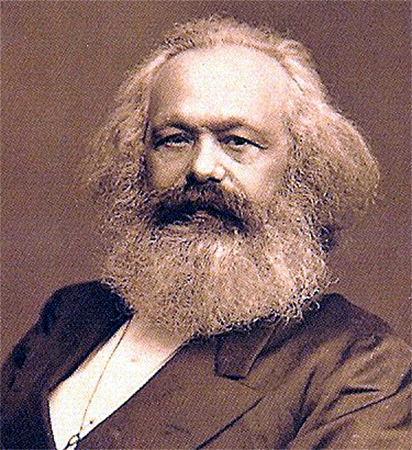
Karl Marx (1818–1883) was a German philosopher and economist. In 1848, he and Friedrich Engels (1820–1895) co-authored the Communist Manifesto. This book is one of the most influential political manuscripts in history. It also presents in a highly condensed form Marx’s theory of society, which differed from what Comte proposed. Whereas Comte viewed the goal of sociology as recreating a unified, post-feudal spiritual order that would help to institutionalize a new era of political and social stability, Marx developed a critical analysis of capitalism that saw the material or economic basis of inequality and power relations as the cause of social instability and conflict. The focus of sociology, or what Marx called historical materialism (the “materialist conception of history”), should be the “ruthless critique of everything existing,” as he said in a letter to his friend Arnold Ruge (1802-1880). In this way the goal of sociology would not simply be to scientifically analyze or objectively describe society, but to use a rigorous scientific analysis as a basis to change it. This framework became the foundation of contemporary critical sociology.
Although Marx did not call his analysis “sociology,” his sociological innovation was to provide a social analysis of the economic system. Adam Smith (1723–1790) and the political economists of the 19th century tried to explain the economic laws of supply and demand solely as a market mechanism, similar to the abstract discussions of stock market indices and investment returns in the business pages of newspapers today. Marx’s analysis showed the social relationships that had created the market system, and the social repercussions of their operation. As such, his analysis of modern society was not static or simply descriptive. He was able to put his finger on the underlying dynamism and continuous change that characterized capitalist society.
Marx was also able to create an effective basis for critical sociology in that what he aimed for in his analysis was, as he put it in another letter to Arnold Ruge, “the self-clarification of the struggles and wishes of the age.” While he took a clear and principled value position in his critique, he did not do so dogmatically, based on an arbitrary moral position of what he personally thought was good and bad. He felt, rather, that a critical social theory must engage in clarifying and supporting the issues of social justice that were inherent within the existing struggles and wishes of the age. In his own work, he endeavoured to show how the variety of specific work actions, strikes, and revolts by workers in different occupations — for better pay, safer working conditions, shorter hours, the right to unionize, etc. — contained the seeds for a vision of universal equality, collective justice, and ultimately the ideal of a classless society.
Harriet Martineau: The First Woman Sociologist?
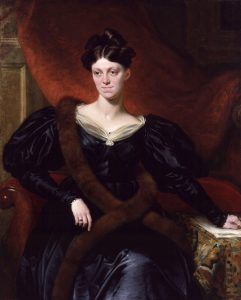
Harriet Martineau (1802–1876) was one of the first women sociologists in the 19th century. There are a number of other women who might compete with her for the title of the first woman sociologist, such as Catherine Macaulay, Mary Wollstonecraft, Flora Tristan, and Beatrice Webb, but Martineau’s specifically sociological credentials are strong. She was for a long time known principally for her English translation of Comte’s Course in Positive Philosophy. Through this popular translation, she introduced the concept of sociology as a methodologically rigorous discipline to an English-speaking audience. But she also created a body of her own work in the tradition of the great social reform movements of the 19th century, and introduced a sorely missing woman’s perspective into the discourse on society.
It was a testament to her abilities that after she became impoverished at the age of 24 with the death of her father, brother, and fiancé, she was able to earn her own income as the first woman journalist in Britain, and to write under her own name. From the age of 12, she suffered from severe hearing loss and was obliged to use a large ear trumpet to converse. She impressed a wide audience with a series of articles on political economy in 1832. In 1834, she left England to engage in two years of study of the new republic of the United States and its emerging institutions: prisons, insane asylums, factories, farms, Southern plantations, universities, hospitals, and churches. On the basis of extensive research, interviews, and observations, she published Society in America and worked with abolitionists on the social reform of slavery (Zeitlin, 1997). She also worked for social reform in the situation of women: the right to vote, have an education, pursue an occupation, and enjoy the same legal rights as men. Together with Florence Nightingale, she worked on the development of public health care, which led to early formulations of the welfare system in Britain (McDonald, 1998).
Émile Durkheim: The Pathologies of the Social Order
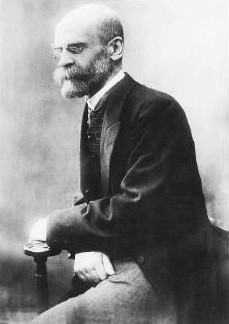
Émile Durkheim (1858–1917) helped establish sociology as a formal academic discipline by establishing the first European department of sociology at the University of Bordeaux in 1895, and by publishing his Rules of the Sociological Method in 1895. He was born to a Jewish family in the Lorraine province of France (one of the two provinces, along with Alsace, that were lost to the Germans in the Franco-Prussian War of 1870–1871). With the German occupation of Lorraine, the Jewish community suddenly became subject to sporadic anti-Semitic violence, with the Jews often being blamed for the French defeat and the economic/political instability that followed. Durkheim attributed this strange experience of anti-Semitism and scapegoating to the lack of moral purpose in modern society.
As in Comte’s time, France in the late 19th century was the site of major upheavals and sharp political divisions: the loss of the Franco-Prussian War, the Paris Commune (1871) in which 20,000 workers died, the fall and capture of Emperor Napoleon III (Napoleon I’s nephew), the creation of the Third Republic, and the Dreyfus Affair. This undoubtedly led to the focus in Durkheim’s sociology on themes of moral anarchy, decadence, disunity, and disorganization. For Durkheim, sociology was a scientific but also a “moral calling” and one of the central tasks of the sociologist was to determine “the causes of the general temporary maladjustment being undergone by European societies and remedies which may relieve it” (1897/1951). In this respect, Durkheim represented the sociologist as a kind of medical doctor, studying social pathologies of the moral order and proposing social remedies and cures. He saw healthy societies as stable, while pathological societies experienced a breakdown in social norms between individuals and society. He described this breakdown as a state of normlessness or anomie — a lack of norms that give clear direction and purpose to individual actions. As he put it, anomie was the result of “society’s insufficient presence in individuals” (1897/1951).
Key to Durkheim’s approach was the development of a framework for sociology based on the analysis of social facts and social functions. Social facts are those things like law, custom, morality, religious rites, language, money, business practices, etc. that can be defined externally to the individual. Social facts:
- Precede the individual and will continue to exist after she or he is gone;
- Consist of details and obligations of which individuals are frequently unaware; and
- Are endowed with an external coercive power by reason of which individuals are controlled.
For Durkheim, social facts were like the facts of the natural sciences. They could be studied without reference to the subjective experience of individuals. He argued that “social facts must be studied as things, that is, as realities external to the individual” (Durkheim, 1895/1964). Individuals experience them as obligations, duties, and restraints on their behaviour, operating independently of their will. They are hardly noticeable when individuals consent to them but provoke reaction when individuals resist.
Durkheim argued that each of these social facts serve one or more social functions within a society; they exist to fulfill a societal need. For example, one function of a society’s laws may be to protect society from violence and punish criminal behaviour, while another is to create collective standards of behaviour that people believe in and identify with. Laws create a basis for social solidarity and order. In this manner, each identifiable social fact could be analyzed with regard to its specific function in a society. Like a body in which each organ (heart, liver, brain, etc.) serves a particular function in maintaining the body’s life processes, a healthy society depends on particular functions or needs being met. Durkheim’s insights into society often revealed that social practices, like the worshipping of totem animals in his study of Australian Aboriginal religions, had social functions quite at variance with what practitioners consciously believed they were doing. The honouring of totemic animals through rites and privations functioned to create social solidarity and cohesion for tribes whose lives were otherwise dispersed through the activities of hunting and gathering in a sparse environment.
Making Connections: Sociology in the Real World
Durkheim and the Sociological Study of Suicide

Durkheim was very influential in defining the subject matter of the new discipline of sociology. For Durkheim, sociology was not about just any phenomena to do with the life of human beings, but only those phenomena which pertained exclusively to a social level of analysis. It was not about the biological or psychological dynamics of human life, for example, but about the external social facts through which the lives of individuals were constrained. Moreover, the dimension of human experience described by social facts had to be explained in its own terms. It could not be explained by biological drives or psychological characteristics of individuals. It was a dimension of reality sui generis (of its own kind, unique in its characteristics). It could not be explained by, or reduced to, its individual components without missing its most important features. As Durkheim put it, “a social fact can only be explained by another social fact” (Durkheim, 1895/1964). These social facts were often hidden causes, not immediately evident to the individuals caught up in them, and required sociological investigation. As he said, “If we had really only to open our eyes and take a good look to perceive at once the laws of the social world, sociology would be useless or, at least very simple” (Durkheim, 1897/1997)
This is the framework of Durkheim’s famous study of suicide. In Suicide: A Study in Sociology (1897/1997), Durkheim attempted to demonstrate the effectiveness of his rules of social research by examining suicide statistics in different police districts. Suicide is perhaps the most personal and most individual of all acts. Its motives would seem to be absolutely unique to the individual and to individual psychopathology. However, what Durkheim observed was that statistical rates of suicide remained fairly constant, year-by-year and region-by-region. The rates of suicide constituted a social fact independent of the unique circumstances of each case. Moreover, there was no correlation between rates of suicide and rates of psychopathology. Suicide rates did vary, however, according to the social context of the suicides. For example, suicide rates varied according to the religious affiliation of suicides. Protestants had higher rates of suicide than Catholics, even though both religions equally condemn suicide. In some jurisdictions Protestants killed themselves 300% more often than Catholics. Durkheim argued that the key factor that explained the difference in suicide rates (i.e., the statistical rates, not the purely individual motives for the suicides) were the different degrees of social integration of the different religious communities — the number and strength of social ties connecting individuals to each other and society — measured by the degree of authority religious beliefs hold over individuals, and the amount of collective ritual observance and mutual involvement individuals engage in religious practice. A social fact — suicide rates — was explained by another social fact — degree of social integration.
The key social function of religion was to integrate individuals by linking them to a common external doctrine and to a greater spiritual reality outside of themselves. Religion created moral communities. In this regard, he observed that the degree of authority that religious beliefs and rituals held over Catholics was much stronger than for Protestants, who from the time of Luther had been taught to take a critical attitude toward formal doctrine. Protestants were more free to interpret religious belief and in a sense were more individually responsible for supervising and maintaining their own religious practice. Moreover, in Catholicism the ritual practice of the sacraments, such as confession and taking communion, remained intact, whereas in Protestantism ritual was reduced to a minimum. Participation in the choreographed rituals of religious life created a highly visible, public focus for religious observance, forging a link between private thought and public belief. Because Protestants had to be more individualistic and self-reliant in their religious practice, they were not subject to the strict discipline and external constraints of Catholics. They were less integrated into their communities and more thrown back on their own resources. They were more prone to what Durkheim termed egoistic suicide: suicide which results from the individual ego having to depend on itself for self-regulation (and failing) in the absence of strong social bonds tying it to a community.
Durkheim’s study was unique and insightful because he did not try to explain suicide rates in terms of individual psychopathology, mental states or intentions. Instead, he regarded the regularity of the suicide rates as a social fact, implying “the existence of collective tendencies exterior to the individual” (Durkheim, 1897/1997), and explained their variation with respect to another social fact: degree of social integration or the strength and number of social bonds tying individuals to society. A group is more socially integrated, “the more active and constant is the intercourse among its members.” Therefore he proposed a social law, “Suicide varies inversely with the degree of integration of the social groups of which the individual forms a part” (Durkheim, 1897/1997).
Contemporary research into suicide in Canada shows that suicide is the second leading cause of death among young people aged 15 to 34 (behind death by accident) (Navaneelan, 2012). The greatest increase in suicide since the 1960s has been in the age 15-19 age group, increasing by 4.5 times for males and by 3 times for females. In 2009, 23% of deaths among adolescents aged 15-19 were caused by suicide, up from 9% in 1974, (although this difference in percentage is because the rate of suicide remained fairly constant between 1974 and 2009, while death due to accidental causes has declined markedly). On the other hand, married people are the least likely group to commit suicide. Single, never-married people are 3.3 times more likely to commit suicide than married people, followed by widowed and divorced individuals respectively. How do sociologists explain this?
It is clear that adolescence and early adulthood is a period in which social ties to family and society are strained. It is often a confusing period in which teenagers break away from their childhood roles in the family group and establish their independence. Youth unemployment is higher than for other age groups and, since the 1960s, there has been a large increase in divorces and single parent families. These factors tend to decrease the quantity and the intensity of ties to society. Married people, on the other hand, have both strong affective affinities with their marriage partners and strong social expectations placed on them, especially if they have families: their roles are clear and the norms which guide them are well-defined. According to Durkheim’s proposition, suicide rates vary inversely with the degree of integration of social groups. Adolescents are less integrated into society, which puts them at a higher risk for suicide than married people who are more integrated. It is interesting that the highest rates of suicide in Canada are for adults in midlife, aged 40-59. Midlife is also a time noted for crises of identity, but perhaps more significantly, as Navaneelan (2012) argues, suicide in this age group results from the change in marital status as people try to cope with the transition from married to divorced and widowed.
Max Weber: Verstehende Soziologie
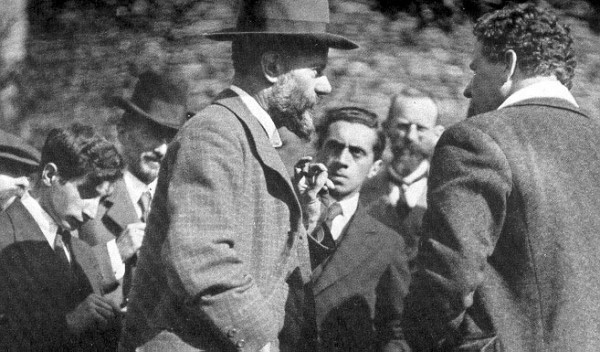
Prominent sociologist Max Weber (1864–1920) established a sociology department in Germany at the Ludwig Maximilian University of Munich in 1919. He wrote on many topics related to sociology including political change in Russia, the condition of German farm workers, and the history of world religions. He was also a prominent public figure, playing an important role in the German peace delegation in Versailles and in drafting the ill-fated German (Weimar) constitution following the defeat of Germany in World War I. His central concept however was his analysis of rationalization (see Chapter 4. Society and Modern Life), which referred to the general tendency for modern society for all institutions and most areas of life to be transformed by the application of technical rationality. He argued that the global power and domination of Western societies had its source in the application of methodical, calculative reason and efficiency to the solution of problems and the organization of life. Two chief consequences of rationalization for the social life of modern societies were the disenchantment of the world (mentioned above) and the Protestant work ethic.
Weber also made a major contribution to the methodology of sociological research. Along with the philosophers Wilhelm Dilthey (1833–1911) and Heinrich Rickert (1863–1936), Weber believed that it was difficult if not impossible to apply natural science methods to accurately predict the behaviour of groups as positivist sociology hoped to do. They argued that the influence of culture on human behaviour had to be taken into account. What was distinct about human behaviour was that it is essentially meaningful. Human behaviour could not be understood independently of the meanings that individuals attributed to it. A Martian’s analysis of the activities in a skateboard park would be hopelessly confused unless it understood that the skateboarders were motivated by the excitement of taking risks and the pleasure in developing skills. This insight into the meaningful nature of human behaviour even applied to the sociologists themselves, who, they believed, should be aware of how their own cultural biases as they could influence their research. To deal with this problem, Weber and Dilthey introduced the concept of Verstehen, a German word that means to understand something from a subject’s point of view. In seeking Verstehen, outside observers of a social world — an entire culture or a small setting — attempt to understand it empathetically from an insider’s point of view.
In his essay “The Methodological Foundations of Sociology,” Weber described sociology as “a science which attempts the interpretive understanding of social action in order to arrive at a causal explanation of its course and effects” (Weber, 1922). In this way he delimited the field that sociology studies in a manner almost opposite to that of Émile Durkheim. Rather than defining sociology as the study of the unique dimension of external social facts, sociology was concerned with social action: actions to which individuals attach subjective meanings. “Action is social in so far as, by virtue of the subjective meaning attached to it by the acting individual (or individuals), it takes account of the behaviour of others and is thereby oriented in its course” (Weber, 1922). The actions of the young skateboarders can be explained because they hold the experienced boarders in esteem and attempt to emulate their skills, even if it means scraping their bodies on hard concrete from time to time. Weber and other like-minded sociologists founded interpretive sociology whereby social researchers strive to find systematic means to interpret and describe the subjective meanings behind social processes, cultural norms, and societal values. This approach led to research methods like ethnography, participant observation, and phenomenological analysis. Their aim was not to generalize or predict (as in positivistic social science), but to systematically gain an in-depth understanding of social worlds. The natural sciences may be precise, but from Weber’s point of view their methods confine them to study only the external characteristics of things.
Georg Simmel: A Sociology of Forms
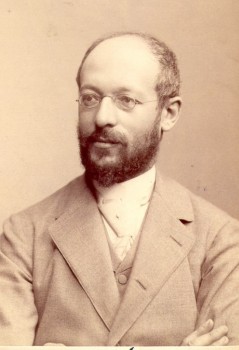
Georg Simmel (1858–1918) was one of the founding fathers of sociology, although his place in the discipline is not always recognized. In part, this oversight may be explained by the fact that Simmel was a Jewish scholar in Germany at the turn of 20th century and, until 1914, he was unable to attain a proper position as a professor due to anti-Semitism. Despite the brilliance of his sociological insights, the quantity of his publications, and the popularity of his public lectures as Privatdozent at the University of Berlin, his lack of a regular academic position prevented him from having the kind of student following that would create a legacy around his ideas. It might also be explained by some of the unconventional and varied topics that he wrote on: the social structure of flirting, the sociology of adventure, the importance of secrecy, the patterns of fashion, the social significance of money, etc. He was generally seen at the time as not having a systematic or integrated theory of society. However, his insights into how social forms emerge at the micro-level of interaction and how they relate to macro-level phenomena remain valuable in contemporary sociology (see Chapter 6. Social Interaction).
Simmel’s sociology focused on the key question, “How is society possible?” His answer led him to develop what he called formal sociology, or the sociology of social forms. In his essay “The Problem of Sociology,” Simmel reaches a strange conclusion for a sociologist: “There is no such thing as society ‘as such.’” ‘Society’ is just the name we give to the “extraordinary multitude and variety of interactions [that] operate at any one moment” (Simmel, 1908/1971). This is a basic insight of micro-sociology. However useful it is to talk about macro-level phenomena like capitalism, social solidarity, or rationalization, in the end what these phenomena refer to is a multitude of ongoing, unfinished processes of interaction between specific individuals. Nevertheless, the phenomena of social life do have recognizable forms, and the forms do guide the behaviour of individuals in a regularized way. A bureaucracy is a form of social interaction that persists from day to day. One does not come into work one morning to discover that the rules, job descriptions, paperwork, and hierarchical order of the bureaucracy have disappeared. Simmel’s questions were: How do the forms of social life persist? How did they emerge in the first place? What happens when they get fixed and permanent?
Simmel’s focus on how social forms emerge became very important for micro-sociology, symbolic interactionism, and the studies of hotel lobbies, cigarette girls, and street-corner societies, etc., popularized by the Chicago School in the mid-20th century. His analysis of the creation of new social forms was particularly tuned in to capturing the fragmentary everyday experience of modern social life that was bound up with the unprecedented nature and scale of the modern city. In his lifetime, the city of Berlin where he lived and taught for most of his career expanded massively after the unification of Germany in the 1870s and, by 1900, became a major European metropolis of 4 million people. The development of a metropolis created a fundamentally new human experience. The inventiveness of people in creating new forms of interaction in response became a rich source of sociological investigation.
Media Attributions
- Figure 1.6a The “School of Athens” by Raffaello Sanzio (1509), via Wikimedia Commons, is in the public domain.
- Figure 1.6b Bust of Herodotus by Manikantesh Doradla, via Wikimedia Commons, is used under a CC BY-SA 4.0 licence.
- Figure 1.6c Ma Duanlin [still frame image] by Century Old, via YouTube, is used under Fair Dealing provisions in the Canadian Copyright Act.
- Figure 1.6d Ibn Khaldun by Waqas Ahmed, via Wikimedia Commons, is used under a CC BY-SA 3.0 licence.
- Figure 1.6e Portrait of Charles de Secondat, Baron de Montesquieu (1689-1755) by unknown, via Wikimedia Commons, is in the public domain.
- Figure 1.7 Newton-WilliamBlake from the William Blake Archive, via Wikipedia is in the public domain.
- Figure 1.8 Auguste Comte (1851), by Johan Hendrick Hoffmeister (1823-1904), from AugusteCompte.org Museum, via Wikimedia Commons, is in the public domain.
- Figure 1.9 Karl Marx John Mayall, via Wikimedia Commons, is in the public domain.
- Figure 1.10 Harriet Martineau by Richard Evans, National Portrait Gallery: NPG 1085, via Wikimedia Commons is in the public domain.
- Figure 1.11 Émile Durkheim-vignette-png-9 by verapatricia_28 [uploader], via Wikimedia Commons, is used under a CC BY SA 4.0 licence.
- Figure 1.12 Chalice Silver with gilding depicting a youthful Christ with cruciform halo and saints Byzantine by Mary Harrsch, via Flickr, is used under a CC BY-NC-SA 2.0 license.
- Figure 1.13 Max Weber 1917 by unknown photographer [uploaded by Guttorm Flatabø], via Flickr is used under a CC BY 2.0 licence.
- Figure 1.14 Georg Simmel by Julius Cornelius Schaarwächter, via Wikimedia Commons, is in the public domain.

